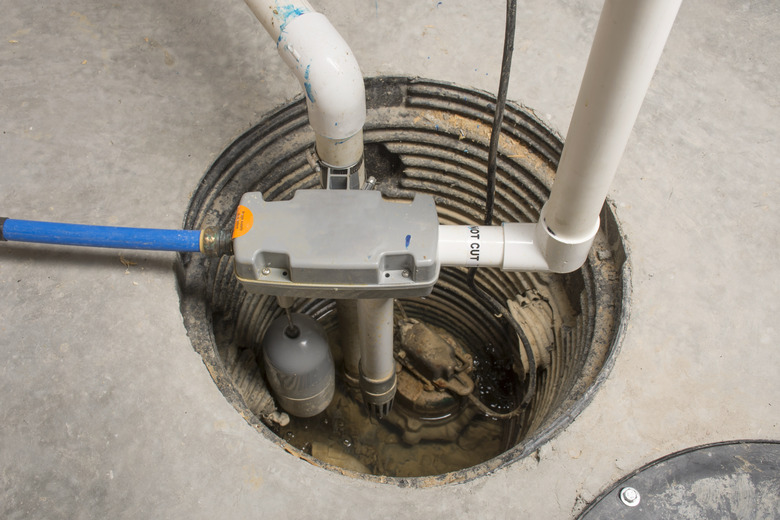How To Fix A Frozen Sump Pump Line
We may receive a commission on purchases made from links.
If coming home to a frozen home isn't bad enough, a flooded basement because of a frozen sump pump line can make a bad situation much worse. Defrosting the sump pump and piping is the obvious start to relieving the stress of the situation. When defrosting a sump pump, slowly bring up the temperature to protect your pump and piping.
Defrosting a Frozen Sump Pump Line
1. Shut off the Power to the Sump Pump
Sump pumps should be on a dedicated electrical circuit. Some sump pumps may even be controlled by a battery backup system. Either way, be sure to turn off the power to the pump by shutting off the correct circuit breaker in the home's service panel (breaker box).
2. Remove All Standing Water
Use a hand pump, wet vacuum, or another water pump to remove all the water in the sump pump pit. Raise the temperature of the surrounding area by using a space heater or turning the heat on in the basement if available. Get the air temperature above freezing. Water may start to fill the pit back up as things defrost, so keep the pump or vacuum close by.
Warning
If you use a space heater, make sure it cannot contact water, and plug it into a GFCI-protected outlet to prevent a serious electrical shock hazard.
3. Use Boiling Water to Defrost the Line
While the basement is warming up, bring a large pot of water to a boil. Once things start to defrost, pour the hot water into the pit. Remove any ice that appears at the end of the sump pump piping. If you can separate sections of the discharge pipe, open up the pipe and pour hot water down it to melt any ice that may still be in the piping.
Defrosting a Flexible Hose
Defrosting a Flexible Hose
Some sump pumps may have been installed using a hose kit. These kits are quick, inexpensive ways to install a sump pump, but defrosting the hose is a little more complicated than the boiling method. The quickest way is to just remove the hose and let it defrost naturally. Another option might be to replace the hose. If this is not practical, then simply wrap the hose with a warm towel until the hose is defrosted.
Keeping a Warm Basement
Keeping a Warm Basement
Maintaining warm basement or crawl space temperatures might sound like a waste of energy, but in fact, it can be energy efficient and aid in the comfort of your home. Maintaining a warm basement or crawl space creates warmer floors.
More important, the reason your sump pump froze to begin with may be from a cold basement. Do not forget about the windows and doors that lead to the basement or crawl space. Seal around any drafty windows and repair or replace any damaged or missing doors.
Reducing Moisture in the Basement
Reducing Moisture in the Basement
Moisture buildup in the basement causes multiple issues. Eliminate moisture by sealing the basement with good masonry sealer. Once again seal around the windows and doors that can allow moist air into the space.
Another quick way to remove moisture is to use a properly sized dehumidifier. Dehumidifiers require a little extra work to empty the container holding accumulated water. Many have a way to drain the water, but if your sump pump is frozen or frequently freezes and the dehumidifier is draining into it, this may create a larger issue; it's better to drain it into a floor drain, if available.
Insulating the Sump Pump Line
Insulating the Sump Pump Line
Wrapping the sump pump piping with insulation may help prevent freezing. Insulation on any pipe helps protect against inclement weather conditions. Adding heat tracing tape to the piping under the insulation may help as well. Just be sure to follow any instructions for proper installation and usage.
